Site Characteristics
Yamakiya Observatory Site (YOS; 37°35’20.5”N, 140°42’37.1”E) is located approximately 35 km of north-west from the FDNPS. The area is approximately 7 ha and was established by the Institute of Environmental Radioactivity (IER) at Fukushima University in 2014. The use by IER is based on the contracts between town municipality / town-run public forestry corporation and IER. The owner of the site is Kawamata-town municipality.
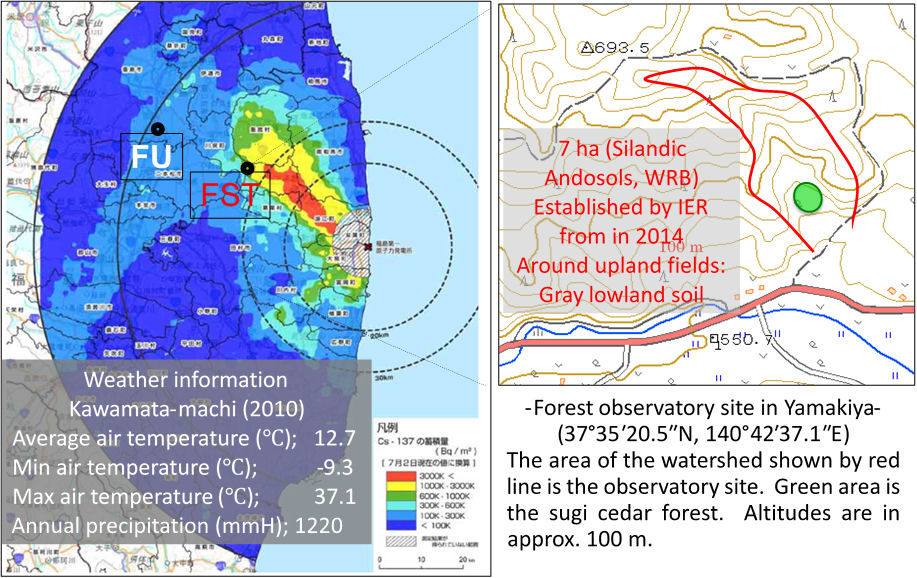
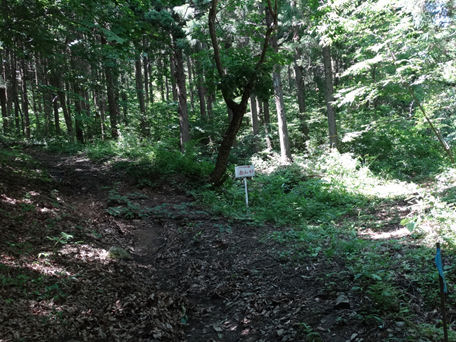 | 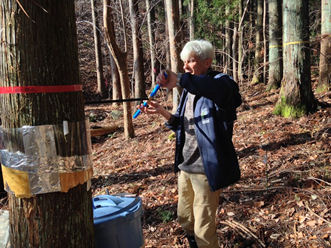 | 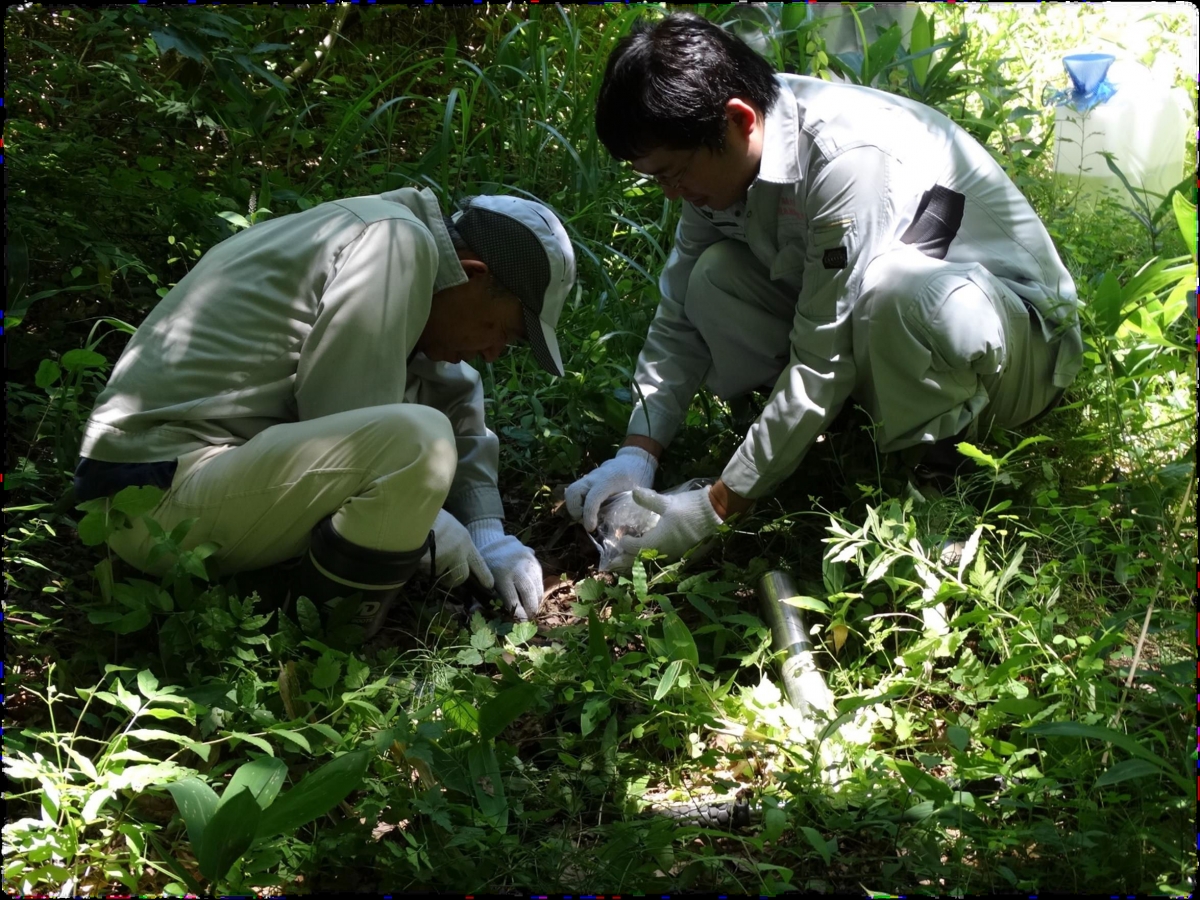 |
Research activities in Yamakiya
The inventory of 137Cs is 670 ± 400 kBq m-2 (n=6) and the 137Cs activity concentration in surface soil (depth of 0-10 cm) is 19 ± 8.3 Bq g-1. Five years after the accident about 85 % of the 137Cs is in the upper five cm of soil five years after the accident (Fig. 1). The available fraction of 137Cs in the upper 10 cm of soil is less than 10%, the strongly bound fraction in the 0-10 cm layer is approximately 85%. The major soil type in the area are andosols. Abnormality of pine trees is found and the frequency of the abnormality is related with radiation dose rate.
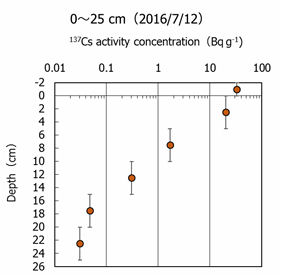 |
Fig.1 Vertical profile of 137Cs in soil collected on July 12, 2016 in Yamakiya
|
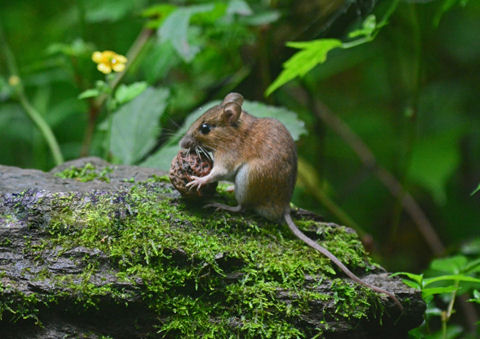 | 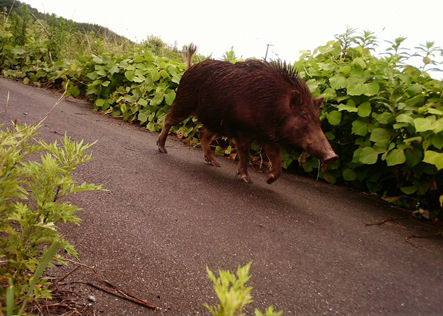 | 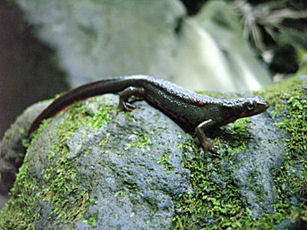 |
Plant and animal samples (Sasa leaf and stem, earthworm, frog, newt, bee, mouse, wild boar) were collected from Yamakiya and the aggregated transfer factor (Tag) for 137Cs and transfer factors of elements from surface soil to plant or animals were calculated. The Tag for 137Cs in the plant and animals is shown in Table 1.
Table 1. Tag of 137Cs (m2 kg-1 FW) in plant and animals in Yamakiya
| Sample | N | Mean | SD | |
|---|---|---|---|---|
| Sasa (Bamboo grass) | 4 | 0.0022 | ± | 0.0016 |
| Earthworm | 5 | 0.0022 | ± | 0.0016 |
| Frog | 28 | 0.0014 | ± | 0.0012 |
| Newt | 1 | 0.00049 | ||
| Bee | 4 | 0.00016 | ± | 0.0001 |
| Mouse | 2 | 0.0098 & 0.014 | ||
| Boar* | 1 | 0.0019 |
*The Tag of wild boar was within the IAEA reported value (0.0005-0.2)
Transfer factors (TF) of elements from surface soil (depth of 0-10 cm) to plant or animals are shown in Fig. 2 and the data are utilized to model transfer in the ecosystem. The TF of 137Cs was higher than that of 133Cs and they had a good correlation (Fig. 3). It implies that the transferable fraction of 137Cs is higher than that of 133Cs. It indicates that the behavior of stable 133Cs in the environment should be regarded as a useful analogue in predicting the long-term change of radiocaesium.
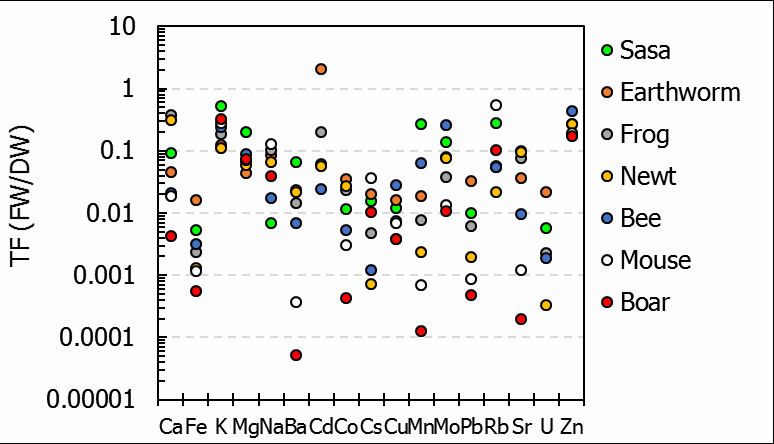 | Fig. 2. Transfer factors of elements in plant and animals in Yamakiya |
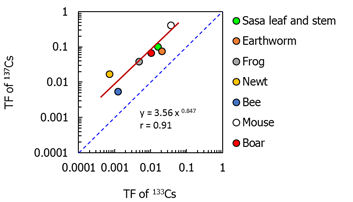 | Fig. 3. Comparison of transfer factors of stable 133Cs and 137Cs in plant and animals in Yamakiya |
Erosion factor of 137Cs is determined in experimental fields of forest, uncultivated field and cultivated field in Yamakiya. It is also investigated erosion after decontamination of surface soil.
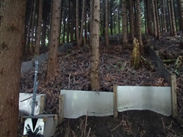 | 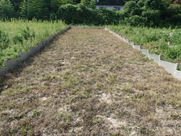 | 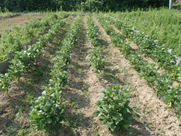 |
Future Activities
- To understand the migration of radiocaesium in forest ecosystems
- Training for graduate students in sampling and pretreatment of samples
- Plan on joint usage of the contaminated site
- To share site specific data between COMET partners to compare, improve and/or validate radioecological models
- To compare radionuclide behavior at different observatory sites (Tsushima, Okuma, Chernobyl etc.)
Page last updated: 2015/16
